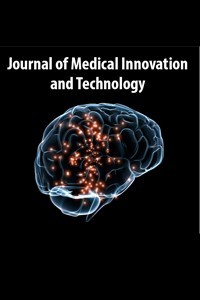Dermal Doku Mühendisliği Uygulaması için 3B Baskılı Doku İskelesi: In vitro Fibroblast Proliferasyonu
PLA Doku İskelesi, Deri Doku Mühendisliği
3D Printed Polylactic Acid Scaffold For Dermal Tissue Engineering Application: The Fibroblast Proliferation in Vitro
PLA Scaffolds, Skin tissue engineering,
___
- 1. Darby IA and Hewitson TD. 2007. Fibroblast differentiation in wound healing and fibrosis. International Review of Cytology. 257: 143-79.
- 2. Takahashi‐Iwanaga H. 1991. The three‐dimensional cytoarchitecture of the interstitial tissue in the rat kidney. Cell and Tissue Research. 264: 269-281.
- 3. Grinnell F, Ho CH, Tamariz E, Lee DJ, Skuta G. 2003. Dendritic Fibroblasts in Three-dimensional Collagen Matrices. Molecular Biology of the Cell. 14: 384-395
- 4. Darby IA, Laverdet B, Bonté F, Desmoulière A. 2014. Fibroblasts and myofibroblasts in wound healing. Clinical, Cosmetic and Investigational Dermatology. 7: 301-311.
- 5. Rozario T, DeSimone DW. 2010. The extracellular matrix in development and morphogenesis: a dynamic view. Developmental Biology. 341: 126-140.
- 6. Hutmacher DW, Sittinger M, Risbud MV. 2004. Scaffold-based tissue engineering: rationale for computer-aided design and solid free-form fabrication systems. Trends Biotechnology. 22: 354-62.
- 7. Chanjuan D, Yonggang LV. 2016. Application of collagen scaffold in tissue engineering: recent advances and new perspectives. Polymers. 8: 2-42
- 8. Guntillake PA, Adhikari R. 2003. Biodegradable synthetic polymers for tissue engineering. European Cells & Materials. 5: 1-16.
- 9. Cui M, Liu L, Guo N, Su R, Ma F. 2015. Preparation, cell compatibility and degradability of collagen-Modified poly(lactic acid). Molecules. 20: 595-607.
- 10. Akbarzadeh R, Yousefi AM. 2014. Effects of processing parameters in thermally induced phase separation technique on porous architecture of scaffolds for bone tissue engineering. Journal of Biomedical Materials Research Part B: Applied Biomaterials. 102(6): 1304-15. 11. Dizon JRC, Espera AH, Chen Q, Advincula RC. 2018. Mechanical characterization of 3D-printed polymers. Additive Manufacturing. 20: 44-67.
- 12. Bracaglia LG, Smith BT, Watson E, Arumugasaamy N, Mikos AG, Fisher JP. 2017. 3D Printing for the design and fabrication of polymer-based gradient scaffolds. Acta Biomaterialia. 56: 3
- 13. Li Q, Li L, Li Z, Gong F, Feng W, Jiang X, Xiong P. 2002. Antitumor effects of the fibroblasts transfected TNF-alpha gene and its mutants. Journal of Huazhong University of Science and Technology Medical Sciences. 22: 92-95.
- 14. Mohiti-Asli M, Saha S, Murphy SV, Gracz H, Pourdeyhimi B, Atala A, Loboa EG. 2015. Ibuprofen loaded PLA nanofibrous scaffolds increase proliferation of human skin cells in vitro and promote healing of full thickness incision wounds in vivo. Journal of Biomedical Materials Research Part B: Applied Biomaterials. 105(2): 327-339.
- 15. Gregor A, Filová E, Novák M, Kronek J, Chlup H, Buzgo M, Blahnová V, Lukášová V, Bartoš M, Nečas A, Hošek J. 2017. Designing of PLA scaffolds for bone tissue replacement fabricated by ordinary commercial 3D printer. Journal of Biological Engineering. 11: 31.
- ISSN: 2667-8977
- Başlangıç: 2019
- Yayıncı: Eskişehir Osmangazi Üniversitesi
3B Yazıcı Destekli C1-C2 Posterior Spinal Füzyon
İnan UZUNOĞLU, R. Buğra HÜSEMOĞLU, İlker Deniz CİNGÖZ, Ceren KIZMAZOĞLU, Murat SAYIN, Nurullah YÜCEER
Nöroşirürji Pratiğinde Portable Bilgisayarlı Tomografinin Yeri
Magnetoensefalografinin Klinik Araç Olarak Kullanımı: Güncel Araştırmaların Kısa İncelemesi
3B Baskılı PET ve PLA Doku İskele Modellerinde MCF-7 Hücrelerinin Yüzey Adezyonlarının Araştırılması
Öykü Gönül GEYİK, Belma NALBANT, R. Buğra HÜSEMOĞLU, Zeynep YÜCE, Tarkan ÜNEK, Hasan HAVITÇIOĞLU
Ufkay KARABAY, R. Buğra HÜSEMOĞLU, Mehtap YÜKSEL EĞRİLMEZ, Hasan HAVITÇIOĞLU
Üç Boyutlu Yazıcı Destekli Üst Torakal Kırıkların (T1-6) Enstrumantasyonu
Ceren KIZMAZOĞLU, Rıfat Saygın ALTINAĞ, Fazlı Oğuzhan DURAK, Ege COŞKUN, R Buğra HÜSEMOĞLU, İsmail KAYA, Hasan Emre AYDIN, Turan KANDEMİR, Orhan KALEMCİ
Spinal Cerrahi Öncesi Üç Boyutlu Modelleme ile Simülasyon ve Cerrahiye Etkileri
İsmail KAYA, İlker Deniz CİNGÖZ, Meryem Cansu ŞAHİN, Nevin AYDIN, Hasan Emre AYDIN, Ali ARSLANTAŞ, Egemen NURSOY
Yeni Kalça Eklem Simülatöründe Biyomekanik Aşınma Testleri
R. Buğra HÜSEMOĞLU, Orkun HALAÇ, Onur HAPA, Fatih ERTEM, Ahmet KARAKAŞLI, Hasan HAVITÇIOĞLU
